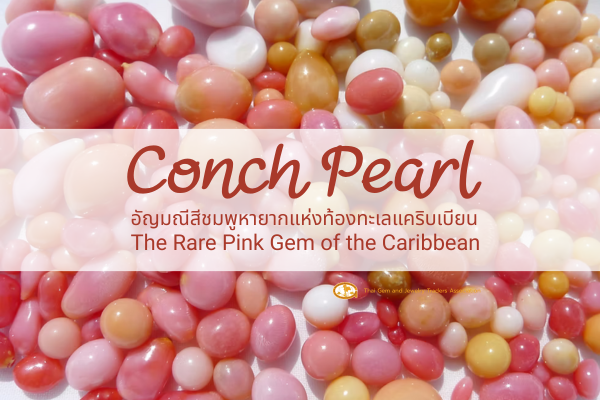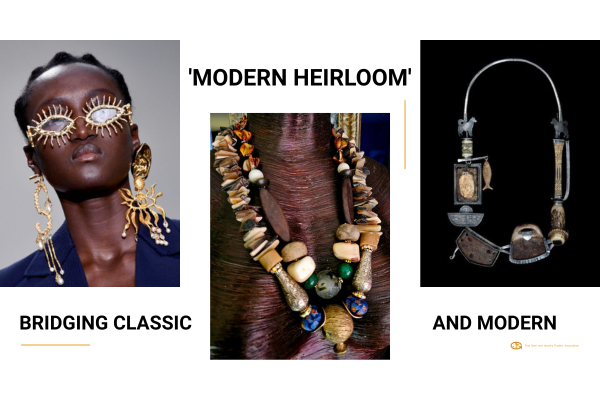

.png)
For those filled with imagination and captivated by the brilliance of gemstones, jewelry design is both an art and a science that allows you to create unique beauty. The Thai Gem and Jewelry Traders Association has compiled essential knowledge from leading international sources to provide in-depth insights into design—especially for beginners who wish to transform their creative ideas into drafts ready for production.
At the heart of design lies “stories” and “inspiration.” Remarkable creations often originate from fascinating narratives. Therefore, seeking inspiration is the most crucial first step.
Nature: Beyond the shapes of flowers and leaves, look deeper into natural structures and patterns—such as the crystalline form of snowflakes, the delicate patterns on butterfly wings, or the intricate lines of tree roots. These can inspire stunning structural designs and ornamental motifs.
Architecture: Study the lines and forms of buildings from various eras—from the curves of Art Nouveau, the simplicity of Minimalism, to the bold geometry of Art Deco. Architecture provides excellent ideas for creating designs with clear structure.
Other Art Forms: Painting, sculpture, and even music can spark inspiration. Try translating the feeling of music into flowing lines or borrowing captivating color palettes from masterpieces to inspire gemstone choices.
Culture and Symbolism: Ancient symbols, hieroglyphics, and patterns on traditional garments carry rich meanings and stories. Incorporating them can add depth and dimension to your creations.
Everyday Objects: Inspiration can hide in ordinary things, such as the shape of an antique key, patterns on ceramic plates, or the spiral of a rope. A fresh perspective may reveal unexpectedly interesting forms.
Sketching is the language of designers—it transforms concepts into visible form. While sketches don’t need to be hyper-realistic, they must clearly communicate ideas.
Create a Mood Board: Before sketching, collect images, colors, textures, or words that reflect your concept (either on a physical board or digitally via Pinterest). This helps set a clear direction and mood.
Start with Basic Shapes: No matter how complex the design, begin with simple geometric forms (circles, squares, triangles) to establish the structure.
Front View: Shows the main design of the piece.
Side View: Highlights thickness, height, and the structure of settings.
Top View: Displays layout and gemstone arrangement from above.
Isometric/Perspective View: Provides a 3D sense of how the finished piece will look.
Attention to Detail: Include key details in sketches—such as gemstone type and size, materials (silver, gold, platinum), and proportions. Adding annotations helps craftsmen better understand your design intentions.
Shading: Practice shading to create depth and dimension in your sketches, making curves, depth, and gemstone brilliance more realistic.
In today’s era, digital technology plays a vital role in helping designers work more efficiently, quickly, and precisely.
Tinkercad: Great for learning basic 3D modeling with an easy, user-friendly interface.
Blender: A free yet powerful program comparable to paid software, though it requires more learning effort. Numerous tutorials are available.
SketchUp: Widely used in architecture but adaptable for jewelry designs involving geometric shapes.
Rhinoceros 3D (Rhino): Industry standard software with high flexibility for creating complex free-form shapes.
MatrixGold / RhinoGold: Built upon Rhino, these add specialized tools and libraries for jewelry designers—such as prong creation, gemstone setting, and metal weight calculations.
3Design: Designed by jewelers for jewelers, featuring an intuitive interface and systematic workflow.
Jewelry CAD: Popular in the 1990s, still known for its jewelry-specific design features.
Jewelry design is an endless journey of learning and discovery. By keeping an open mind, observing the world around you, and consistently practicing the art of expressing imagination, you can create magnificent works that tell unique stories of their own.

ในไตรมาสที่ 3 ปี 2025 ตลาดประสบกับภาวะขาดแคลน ทับทิมคุณภาพสูง* ในเกือบทุกกลุ่ม การลดลงโดยรวมของดัชนี GTI ทับทิมนั้น เกิดขึ้นหลักๆ จากสัดส่วนการซื้อขายทับทิมขนาดใหญ่ (3 กะรัตขึ้นไป) ที่ลดลง รวมถึง ไพลินคุณภาพสูง* โดยเฉพาะที่มีน้ำหนักมากกว่า 5 กะรัต เริ่มหา

In the world of precious gemstones, there lies a hidden treasure that originates not from beneath the earth, but from the depths of the sea within a conch shell.

In the world of luxury goods, the word "Classic" used to represent safety and sustainability, while "Modern" implied something whimsical and fleeting. However, in this new decade, those rules have been shattered.